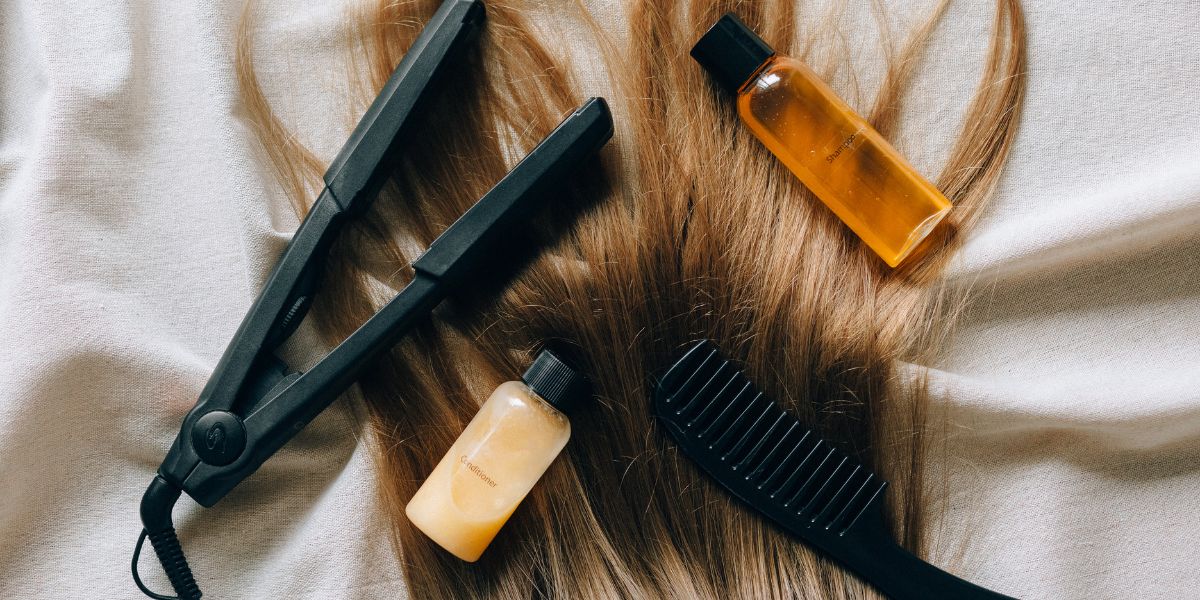
To safeguard your hair from the potential harm caused by styling tools, adopting protective measures is crucial. By incorporating specific practices into your hair care routine, you can minimize damage and maintain healthy locks. Taking the time to understand the role of heat protection products, adjusting tool temperatures accordingly, and exploring alternative styling techniques can all contribute to the well-being of your hair. These strategies are just the beginning of a comprehensive approach to ensuring your hair remains vibrant and resilient.
Understanding Heat Protection Products
To shield your hair from heat damage, understand the role of heat protection products. These products act as a barrier, helping to prevent direct heat from styling tools from causing harm to your hair. They work by forming a protective layer over each strand, reducing the impact of high temperatures. When selecting a heat protection product, look for one that suits your hair type and styling routine. Some products are specifically designed for use with flat irons, curling wands, or blow dryers, so choose accordingly.
To effectively use heat protection products, apply them generously to damp hair before using any styling tools. Make sure to distribute the product evenly from roots to ends to ensure all your hair is protected. Additionally, consider reapplying the product if you're using high heat or restyling your hair throughout the day. By incorporating heat protection products into your styling routine, you can help minimize the damage caused by heat styling tools and keep your hair looking healthy and vibrant.
Proper Temperature Settings for Styling Tools
Consider adjusting the temperature settings on your styling tools to minimize hair damage and achieve optimal styling results. Using the right temperature can make a significant difference in the health and appearance of your hair. When using tools like flat irons, curling wands, or hair dryers, it's essential to set the temperature according to your hair type and the style you want to achieve. Fine or damaged hair is more susceptible to heat damage, so lower temperatures are recommended. Thicker or coarser hair may require slightly higher temperatures to effectively style the hair.
Most styling tools come with adjustable heat settings, allowing you to customize the temperature based on your needs. Start at a lower temperature and gradually increase it if necessary. Avoid using the highest heat setting unless absolutely needed, as excessive heat can cause irreparable damage to your hair. Remember to use heat protectant products before styling to create a barrier between your hair and the heat. By being mindful of the temperature settings on your styling tools, you can help prevent hair damage and keep your locks looking healthy and beautiful.
Limiting Heat Exposure and Frequency
Limit excessive heat exposure and reduce the frequency of styling sessions to protect your hair from damage. Excessive heat can cause serious harm to your hair, leading to dryness, breakage, and dullness. To prevent this, try to limit the use of heat styling tools such as flat irons, curling wands, and blow dryers. When you do use these tools, ensure that they're set to the lowest effective temperature to achieve your desired style.
Additionally, reducing the frequency of styling sessions can help give your hair a much-needed break. Instead of styling your hair every day, consider opting for heat-free hairstyles on some days to minimize the damage caused by constant exposure to heat. By giving your hair time to recover and rejuvenate, you can improve its overall health and appearance.
Implementing Heat-Free Styling Techniques
Explore creative ways to style your hair without using heat tools to maintain its health and vitality. Heat-free styling techniques not only help prevent damage but also promote the natural texture and shine of your hair.
One option is to try braiding your hair before bed and waking up to beautiful waves in the morning. You can also experiment with different types of braids like French braids, fishtail braids, or rope braids for a variety of looks.
Another heat-free styling technique is to use hair accessories such as headbands, scarves, or hair clips to create unique and stylish hairstyles. These accessories can add a pop of color or a touch of elegance to your hair without the need for heat styling.
Additionally, you can opt for air-drying your hair instead of using a blow dryer. Allow your hair to dry naturally to enhance its overall health and reduce the risk of heat damage.
Embracing heat-free styling techniques can help you maintain gorgeous and healthy hair in the long run.




